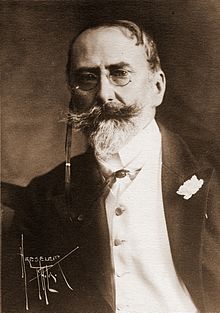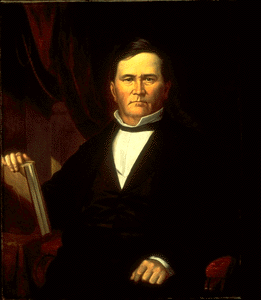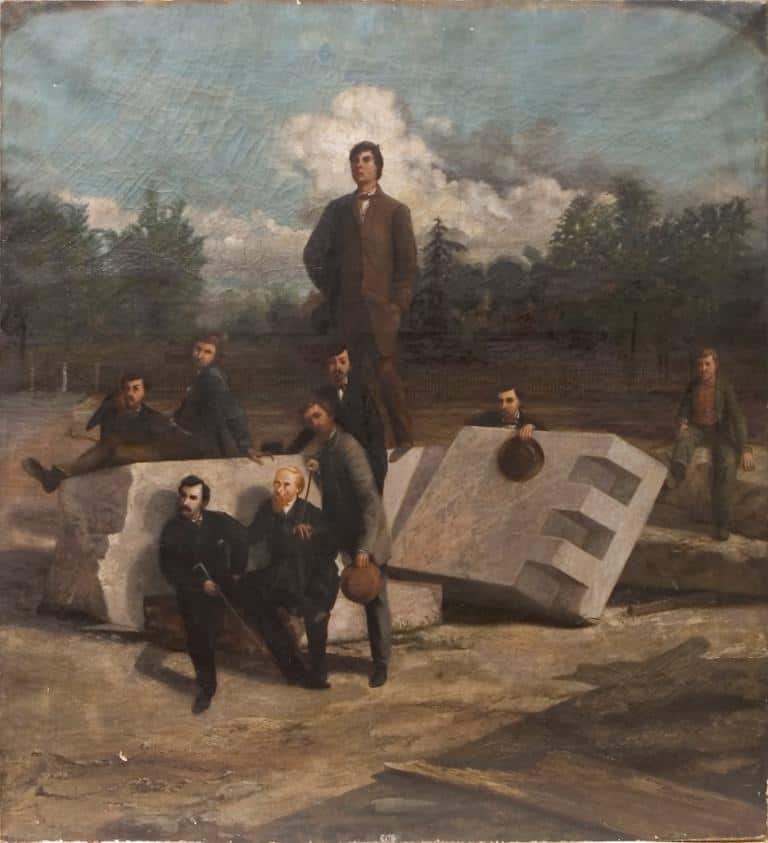
Teaching is a noble profession and many times a student will ultimately outshine the instructor. Such was the case with Jacob Cox, who taught painting.
Jacob Cox
Jacob was born in 1810 in Philadelphia. He arrived in Indianapolis as a young man in 1833. He opened a business selling tin ware and stoves and worked as a coppersmith. In 1835, he also opened an artist’s studio. In 1840, he painted a banner promoting William Henry Harrison’s bid for president. That banner spurred interest in Cox’s artistic work. In 1842 he moved to Cincinnati to open a studio with John Dunn, a former treasurer of the State of Indiana.
The move didn’t work out. After five months, Cox returned to his business in Indianapolis and continued painting as a sideline, exhibiting annually at the shows of the Cincinnati Art Union. By 1860, however, he was devoted to art full-time.
Cox became well known in Indianapolis for his portraits and landscapes. Among his portraits were of a number of the early Indiana governors: James B. Ray, Noah Noble, Samuel Bigger, Joseph A. Wright, Henry S. Lane, and David Wallace.
Although self-taught, Cox was proud to share his talent and he taught willing students—some formally and others informally. Perhaps the most accomplished artist he taught in a formal setting was William Merritt Chase.
William Merritt Chase
Chase was a native Hoosier born in 1849. Chase’s family moved to Indianapolis in 1861 and young William worked in the family business as a salesman. Chase showed an early aptitude for art and began studying with a couple of local artists, including Jacob Cox. Chase served briefly in the Navy, and then at his teachers’ urging, he moved to New York City for more formal instruction.
By the late 1860s, his family’s fortunes had turned. As a result, Chase left his training in New York and moved to St. Louis where his family had relocated. He became active in the local art community and sold paintings to help support his family. In 1871, he exhibited for the first time in the National Academy.
The quality of Chase’s impressionistic work elicited support from wealthy clients in St. Louis, some of whom offered to sponsor him for two years in Europe. He settled in Munich and began producing work that was recognized internationally. In 1876, his painting “Keying Up”-The Court Jester won a medal at the Centennial Exposition in Philadelphia.
In 1878, Chase returned to the United States and settled in New York. Chase proved to be a cultivated, sophisticated, cosmopolitan, and devoted family man, and an esteemed teacher. He married Alice Gerson in 1886. Together they raised eight children during Chase’s most energetic artistic period. He counted among his close friends, Winslow Homer, Augustus Saint Gaudens, and later Georgia O’Keefe.
Parsons
Like Jacob Cox, Chase enjoyed sharing his knowledge and taught many of the most important artists on the east coast and he was influential in establishing California art in the early 20th century. Among his many teaching endeavors he established the Chase School which became known as Parsons, the New School for Design in New York. By the time of his death in 1916, he was one of the most well-known, most decorated, and much admired artists in the country.

While William Merritt Chase was the most successful of Jacob Cox’s formal students, one of his informal students also achieved world-wide fame—though not necessarily for his paintings.
Lew Wallace
About 1840, young Lew Wallace watched as Jacob Cox painted a portrait of Governor David Wallace. In his autobiography, Lew Wallace, told a story about his early aspirations to become an artist. He found his father posing one day in Jacob Cox’s studio.
“When I heard that Mr. Cox painted pictures in oil, I nerved myself and boldly invaded his studio. He was painting my father’s portrait when I went in. The coincidence excused me. We became good friends, and not a few of my truancies were spent watching him at work.”
According to his recollections, Lew helped mix the pigments used for the portrait. At that time, paints came in hard cakes. Artists had to carefully grind the colors on a marble slab before mixing them with oil. Lew volunteered to do this for Mr. Cox.
After a time Lew gave in to temptation. While he admitted that Mr. Cox would probably have given him the paint, he was hesitant to voice his passion. Instead he loaded a tin plate with “dabs of paints, hastened home, and with the coveted plunder, stole up into the garret as the safest place from intrusion.”
Realizing he needed further equipment, he pulled hairs from the tail of a dog and tied them on a stick to make a brush. He used the bottom of a wooden box as his canvas and appropriated castor oil from the sickroom supplies as his mixing fluid. His subject was Chief Black Hawk.
When he was finally located, intently involved in his new activity, Lew said he had never heard his father laugh so long and heartily as when his art equipment was produced. Nevertheless, his father discouraged the interest in art. “You must give up drawing. I will not have it. If you are thinking of being an artist, listen to me…to give yourself up to [that] pursuit means starvation.”
Lew’s Painting
Lew continued for a time to pursue his artistic talents, but because of the lack of support at home and the comments made by school mates he let his interest in painting drift slowly away. As he later said:
“I resolved to give up the dream. Still it haunts me. At this day even, I cannot look at a great picture without envying its creator the delight he must have had the while it was in evolution.”
However, the dream never completely died. In the 1860s, he again began creating artwork. For much of the rest of his life, when time permitted, he sketched and painted in oil and watercolor but, perhaps because his father had so discouraged his interest in the profession, Wallace seldom signed his work.
Even though his painting ability was known during his lifetime and some of his works were very well received when they were on public display, other careers and accomplishments in his full life overshadowed Lew Wallace’s artistic creations and the early lessons he learned from Jacob Cox.

2 thoughts on “Jacob Cox, William Merritt Chase, & Lew Wallace”
I’ve always thought that Mudd’s chummy posture with Booth, especially with the placement of his hand on Booth’s shoulder, speaks volumes about LW’s thoughts on Mudd’s involvement with the assassins, despite his claim of innocence.
I think that makes sense, yes! Just wish we knew for sure why Mary Surratt didn’t appear in the picture, since Lew could have painted her from a photograph as he did John Wilkes Booth and John Surratt.